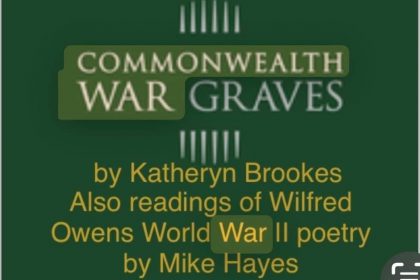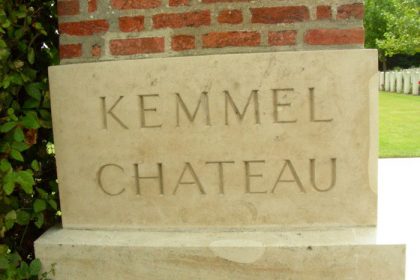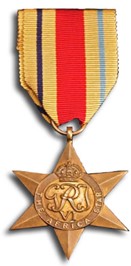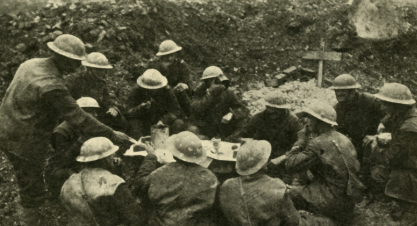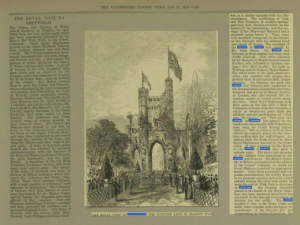
The royal visit to SHEFFIELD. The Prince and Princess Wales visited Sheffield on Monday, to open Firth Park, the new public park which has been generously presented the Mayor, Mr. Mark Filth, to his fellow townsmen. Their Royal Highnesses arrived by the Great Northern Railway from London, between two and three o’clock. The Victoria station was handsomely decorated with red cloth, foliage, and flowers, and with blue carpet, the pattern of which displayed the Prince of Wales’s plumes and motto. guard of honour of the 19th Regiment with their band, and escort of the Hussars, under the command of General Sir H. de Bathe, Bart., were in waiting at the station. The Mayor, coming there to greet the Prince and Princess, was accompanied by the Lord Lieutenant of Yorkshire, Earl Fitzwilliam, the Duke of Norfolk, Lords Auckland, Galway, Denman, Halifax, and Wharncliffe, Lord John Manners, and the High Sheriff of Yorkshire; also by Sir John Brown, Mr. Roebuck M.P., Mr. Mundella, M.P., Lord Colville, deputy chairman of the Great Northern, and some ladies of their families. The Aldermen and Town Council were, of course, present, in their robes of office. The Prince and Princess were allowed to rest half an hour in the retiring-rooms provided for them at the Royal Victoria Hotel, and were then conducted in procession through the suburbs of the town, and along the Wicker and other roads to the new park. A body of mounted police formed the van, followed by mounted standard-bearers, with the banners of the Prince of Wales, the Duke of Norfolk, the Lord Lieutenant, and the High Sheriff. A squadron of the Ist West Yorkshire Yeomanry Cavalry, with their band, came next in order. The banner of the town of Sheffield was borne in advance of fifteen carriages, which conveyed the Aldermen and Town Councillors. Many other carriages followed, with large number of persons of local influence or distinction. The Company of Cutlers, with their banner in front, were represented by the Master Cutler and his family, the Chaplain, and other officials of that company. Earl and Countess Fitzwilliam were in carriage and four, preceded by outriders and a mounted standard-bearer. The Duke of Norfolk, with his sisters, Lady Mary Howard, Lady Philippa, and Lady Anne, was in a similar equipage with the like attendance. The Archbishop of York and Mrs. Thomson, in another carnage and four, were likewise preceded by the banner of the Archbishop; and the carriage of the Mayor and Mayoress had a standard going before it. Then came four mounted trumpeters, in the liveries of the borough, with the military baud and escort of troops. The standard of the Prince of Wales was carried by Mr. Colin Smith. The Prince and Princess, in their carriage and four, were chiefly observed. They were attended by the Marquis of Hamilton and General Knollys, who followed in another carriage, with Miss Knollys, the Lady in Waiting, and the Equerry, Major Russell. The whole route to the park, about two miles, was crowded with people, who greeted their Royal visitors with hearty cheering. On entering the park, the Prince and Princess were conducted to the Royal pavilion, a handsome structure, designed and put up by Messrs. Defries, of London, who also erected the triumphal arches several points along the route. Their Royal Highnesses took their seats on the dais, with a blast of triumphal welcome from the trumpets, a salute of twenty-one guns from the artillery, and the performance of God save the Queen” and “God bless the Prince of Wales,” first played by the band of the Hallamshire Rifle Volunteers, then sung by 15,000 Sunday School children.
The Archbishop of York then offered up a special prayer for the occasion, ending with the Lord’s Prayer. An address from the Town Council to their Royal Highnesses was rend by the Town Clerk. It was presented the Mayor to the Prince of Wales, who made suitable reply. The mover and seconder of the address were introduced to the Prince and Princess. The Master Cutler, Mr. G. Wilson, next presented the address the Cutlers’ Company, to which his Royal Highness returned appropriate answer. After these municipal and corporate presentations, the worthy Mayor, in his personal capacity, delivered a brief address stating the views with which he made the gift of Firth Park to the town of Sheffield. His Worship herewith placed in the hands of his Royal Highness the legal document whereby it was conveyed to the borough Corporation as trustees for the public. The Prince handed it over to the Town Clerk and made some remarks acknowledging the munificence of the Mayor’s gift and commending its beneficent purpose. His Worship herewith placed in the hands of his Royal Highness the legal document whereby it was conveyed to the borough Corporation as trustees for the public. The Prince handed it over to the Town Clerk and made some remarks acknowledging the munificence of the Mayor’s gift and commending its beneficent purpose.
His Royal Highness then declared the park to be opened, which announcement was greeted with a flourish of trumpets, and the band played Rule Britannia.” The procession was again formed to conduct the Royal visitors five miles farther namely, to Oakbrook. the residence of the Mayor and Mrs. Firth. They reached the house at six o’clock and were entertained there as the guests of his Worship. After dinner their Royal Highnesses went to ball given by the Cutlers’ Company. The town was illuminated, and there was a grand display of fireworks at night.
The triumphal arches, two of which are shown in our Illustrations, were superb, not only those arranged by Messrs. Defries for the Corporation, but one erected by the Duke of Norfolk Lady’s Bridge, the main entrance to Sheffield from the railways; and also the Scottish arch, in Glossop-road, designed by Mr. Crighton, an artist and a member of the town council, but erected the cost of the Scotchmen residing in Sheffield. The Duke of Norfolk’s arch was in the form of a castellated gateway, 80 ft. high, with four comer turrets; along the riverside at this part was battlemented wall, manned by soldiers in scarlet uniforms and bright steel armour. The Scottish gate was like a baronial tower, ft. in height, with ivy growing over its lower part.
One of the most notable feature’s of that portion of the decorations intrusted to Messrs. Defries was in Station-road. That thoroughfare was planted with sixty Venetian masts, bearing gonfalons of the Prince and ‘Princess of Wales, that of the Prince with his eight titles as Duke Cornwall, Duke of Rothesay, Duke of Saxony, Earl of Chester, Earl of Dublin, Earl of Garrick, Lord of the Isles, and Baron Renfrew. The masts also displayed the armorial bearings of the Archbishop of York, the Bishop of Ripon, the Dukes of Norfolk, Devonshire, and Rutland, Earl Fitzwilliam, Lord Wharncliffe, the six lords of the manor of Sheffield, and the twenty boroughs of Yorkshire. These heraldic representations floated from the top of the masts.
Underneath were cartouches bearing badges and orders of the Prince of Wales and his titles, and the badges and orders of the different noblemen of Yorkshire. Each badge was supported by group of flags representing the union-jack, that of St. George and St. Andrew, and the Danish ensign; the whole surrounded by Prince-of-Wales plumes. The Arch of Welcome” at the extremity of Station-road was Gothic, 40 ft. in height, and supported tiers 6 ft. square and a single span extending the entire width of the road—2B ft. The triumphal way was continued by Venetian masts flagged and draped and decked with shields and mottoes, the German Fest und Treu” standing out prominently among them. With more or less variety, this was the order of the decorations along the route to the park.
At the entrance to the road leading into Firth Park was a triumphal arch floral architecture, supported by eight gigantic columns, which were wreathed with laurels, ferns, and flowers. The caps of the arch were ornamented with medallions of flowers, and the pediment was of evergreens with floral border. The decoration of this structure was a Royal crown the top, with the flags of England, Ireland, Scotland, and Denmark grouped. In the centre of the arch was large Prince-of- Wales plume, supported on each side by a letter “A” in flowers. Above the side arches floated Danish banners; and beneath these, tropics of flags, corresponding with the larger trophy in the centre. Suspended within the centre of the arch were festoons of flowers and laurels.
Within the park the Royal pavilion and dais were exceedingly pretty, and merit description. The structure was of semi-hexagon shape, 120 ft. long, relieved by a very handsome Turkish minaret, of melon shape, in crimson and gold, and surmounted Prince-of-Wales plumes, designed by Messrs. Defries expressly for the occasion.
Along the top row and over the comice were displayed twelve immense silk banners, emblazoned in gold and bearing the arms of the Prince and Princess of Wales, the eight titles of the Prince, and the standards of St. George and Denmark. In front of the minaret was erected a large trophy of silk flags with gold mounts and tassels, the flags consisting of Union Jacks, St. George, St. Patrick, St. Andrew, and Denmark. In the centre of the trophy were placed the elaborately-executed arms of the Prince of Wales, with supporters. This was over the Royal dais, on each side of which, the wings of the Royal pavilion, was erected a small trophy with large Prince-of-Wales plume in the centre of each. Along the whole length of the pavilion was an elegantly-wrought cornice of white, blue, and gold, supported many columns, surmounted by Prince-of-Wales plumes in gold. This cornice was a profusion of Royal blue satin drapery, elegantly arranged and richly trimmed with gold fringe and tassels. The back of the body of the pavilion was lined with scarlet and white, the same the ceiling. The back of the Royal dais consisted of a reredos of scarlet and blue cloth, rich in its texture. The appearance of the pavilion, as a whole, reflected much credit upon its designers.
On Tuesday the Prince and Princess were taken to see the great iron and steel manufactures of Sheffield. They visited the works of Messrs. Thomas Firth and Sons, where they saw the casting of steel ingots and the making of great guns for foreign Governments, as well as the hammering of a core for the 81-ton gun under construction Woolwich. At the Cyclops Works, belonging to Messrs. Cammell, their Royal Highnesses saw the rolling and planning of massive armour plates. The manufacture of knives and other cutlery was next examined, at the establishment of Messrs. Rogers and Sou. The Royal visitors, who were accompanied by the Mayor, the Duke of Norfolk, the Archbishop of York, Lord John Manners, and several ladies, seemed greatly to admire what they saw. They partook of luncheon at the Cutlers’ Hall. In the afternoon they went to the Duke of Norfolk’s house in the neighbourhood of Sheffield. The Princess of Wales hero presented a new set of colours to the 19th Regiment (Ist Yorkshire) which is henceforth to bear her name. Leaving Sheffield “on Wednesday morning, their Royal Highnesses went to visit the Duke of Rutland his house in that part of the country. We shall give some further Illustrations of the proceedings at Sheffield.
C BNA -collated by Linda Taylor May 2020 C W Lee Diary

